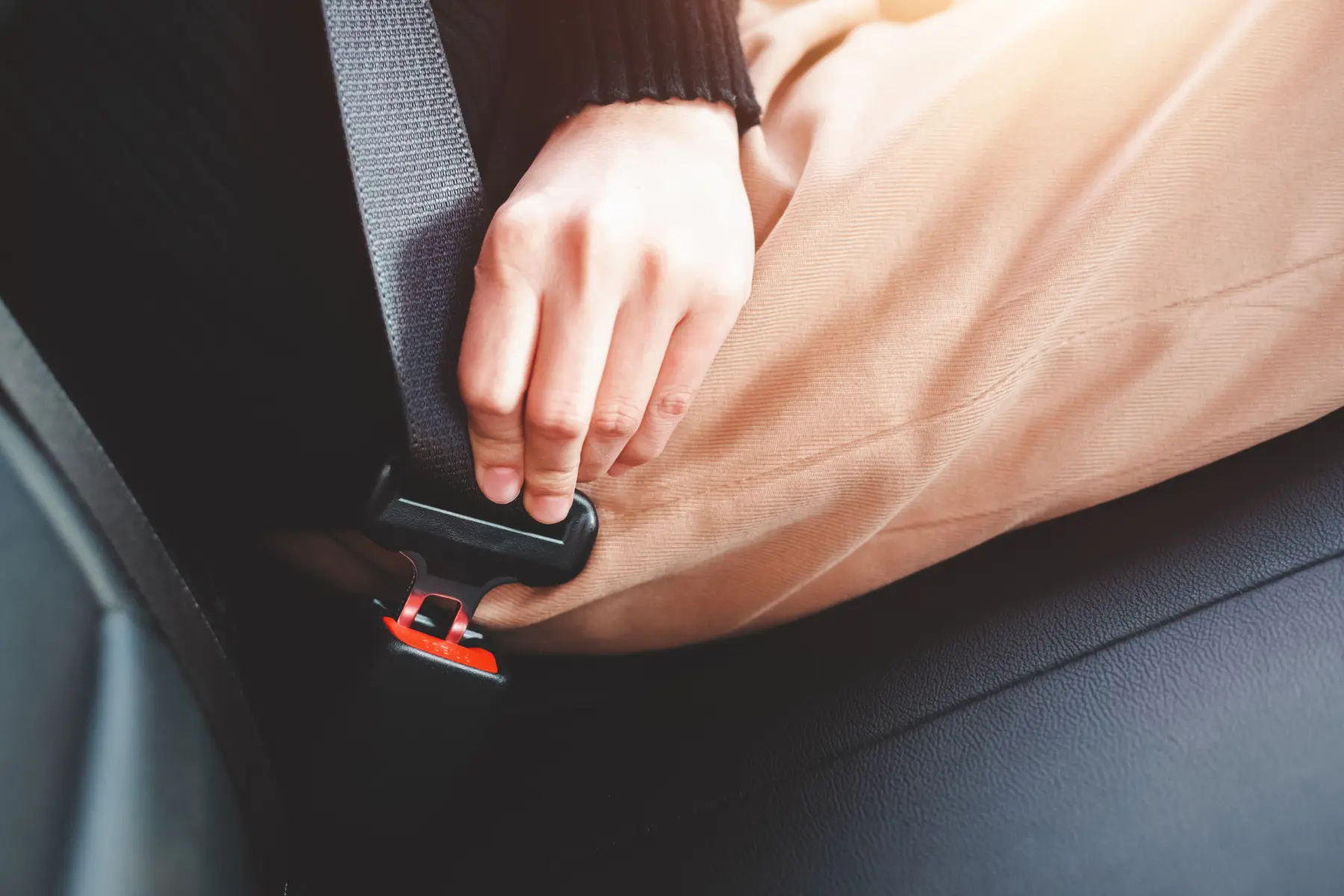The year 2024 has brought significant advancements in the realm of vehicle safety, marking an era where technology and innovation converge to protect lives on the road. Today, vehicle safety technology has transcended basic seatbelts and airbags, incorporating sophisticated systems that prevent accidents before they occur. These enhancements are not just about adhering to regulations; they symbolize a commitment to safeguarding passengers and pedestrians alike, demonstrating how far the automotive industry has come in its pursuit of safety.

Latest Car Alarm Systems
Innovations in Theft Prevention
Modern systems now incorporate sophisticated technologies such as proximity sensors, which can detect movement around the vehicle and alert the owner before an intruder even touches the car. This proactive approach to theft prevention not only deters potential thieves but also provides vehicle owners with an added layer of security. Moreover, these systems can differentiate between potential threats and non-threatening scenarios, such as animals passing by, reducing false alarms and increasing the reliability of theft prevention measures.
Integration with Smartphone Apps
This synergy allows for a seamless connection between the vehicle and its owner, offering features like remote start, location tracking, and even health reports of the vehicle’s status. These apps not only enhance security features but also provide convenience, such as warming up the car on a cold day before the owner arrives. This level of interaction brings vehicle security into the modern age, making it easier for owners to stay connected and informed about their vehicle’s safety and operational status.
Smart Headlights for Night Driving
Advancements in Visibility Technology
The development of smart headlights for night driving represents a significant leap forward in automotive safety. These innovative lighting systems automatically adjust brightness and range based on the vehicle’s speed, the road conditions, and the presence of other traffic. This means that drivers get the best possible illumination without blinding oncoming vehicles, enhancing safety for everyone on the road. Furthermore, some smart headlights can even change their beam patterns to highlight potential hazards more effectively, such as pedestrians or obstacles on the road, making night driving safer and less stressful.
Automatic Adjustment Features
This automatic adjustment ensures that the driver always has the optimal amount of light to see, without any manual intervention required. Whether navigating through a dark, rural road or a well-lit urban area, these headlights adapt in real-time, dimming or brightening as needed. This not only improves the driver’s visibility but also reduces the strain on their eyes, making for a more comfortable and safer driving experience at night.
Compatibility with Various Vehicle Models
Manufacturers are increasingly recognizing the safety benefits and demand for such technology, integrating it into both high-end luxury vehicles and more affordable models. This widespread compatibility ensures that a larger number of drivers can benefit from enhanced night driving safety, regardless of their vehicle’s make or model. As this technology continues to evolve, it is expected to become a standard feature.
Safety Seatbelt Adjusters
Enhancing Comfort and Safety
These innovative devices allow for the adjustment of a seatbelt’s position, ensuring it fits properly across the torso and lap of individuals regardless of their size or height. This customization not only enhances comfort during rides, making long journeys more bearable but also optimizes the seatbelt’s functionality in protecting passengers by ensuring the force of impact during a collision is distributed more evenly across the body.
Importance in Collision Protection
These devices are not merely accessories; they are essential tools that significantly enhance the protective capabilities of seatbelts. Below, we delve into the specifics of how seatbelt adjusters contribute to safety, making every journey safer for passengers:
- Optimal Force Distribution: Seatbelt adjusters play a critical role in collision protection by ensuring the seatbelt is positioned to distribute the force of a crash across the body’s strongest areas—the chest and pelvis—rather than concentrating it on more vulnerable parts. This optimal distribution minimizes the risk of internal injuries during an accident. By aligning the seatbelt correctly, adjusters ensure that the protective force is evenly spread, offering maximum safety to the occupant.
- Reduced Risk of Slippage: One of the key benefits of seatbelt adjusters is their ability to maintain the seatbelt in a firm position, preventing it from slipping off crucial areas like the shoulder or hip. This stability is vital during a crash, as slippage could lead to the belt failing to protect as intended, therefore increasing the severity of injuries. The adjusters ensure that the belt stays in place, guarding against such scenarios and providing a reliable safeguard against harm.
- Prevention of Submarining: Submarining, a dangerous situation where a passenger slides under the seatbelt during a crash, is significantly mitigated by the use of seatbelt adjusters. These devices keep the lap belt properly positioned over the pelvis, not the stomach, which is crucial for preventing submarining. This proper positioning is essential for the seatbelt to function as intended, offering maximum protection by keeping the occupant securely in their seat.
Seatbelt adjusters are a fundamental component in the ecosystem of vehicle safety. By enhancing the functionality of seatbelts, they not only protect passengers from injuries in the event of a collision but also promote the consistent use of seatbelts through improved comfort.
Installation and Usage Guidelines
Most adjusters come with detailed instructions that outline proper placement and adjustment techniques. It’s essential to regularly check the adjuster for proper positioning before each use, especially in vehicles used by multiple drivers or passengers of varying sizes. Regular maintenance checks are also recommended to ensure the adjuster remains in good condition, providing effective safety enhancements over time.

Blind Spot Monitors
Technology Behind Blind Spot Detection
These systems leverage sophisticated technology to assist drivers in recognizing vehicles that may be hidden in their blind spots, therefore enhancing overall driving safety. Below is an in-depth look at how these systems operate, broken down into key components:
- Sensing: At the heart of the blind spot detection system are radar or ultrasonic sensors that are strategically mounted on the sides of the vehicle. These sensors play a crucial role by constantly scanning the areas adjacent to the vehicle, which are typically beyond the driver’s direct and peripheral vision. The technology is designed to detect the presence of other vehicles within these blind spots, ensuring that the driver is made aware of potential hazards that would otherwise go unnoticed. This capability is fundamental to preventing side-swipe accidents, especially on multi-lane roads.
- Processing: Upon detecting another vehicle in the blind spot, the critical task of processing this information begins. The vehicle’s onboard computer system takes over, analyzing the data received from the sensors to ascertain the relative speed and distance of the detected vehicle. It then determines whether the detected object constitutes a threat that warrants alerting the driver.
- Alerting: When the system identifies a vehicle in the blind spot as a potential threat, it proceeds to alert the driver through one or more means designed to quickly and effectively capture their attention. Alerts may be visual, such as a flashing light on the corresponding side mirror; auditory, with a warning beep or tone; or tactile, like a vibration in the steering wheel or driver’s seat. These notifications are intended to make the motorist take quick action, such as changing lanes or correcting their direction, to avoid a potential collision.
- Intervention: In more advanced blind spot detection systems, the technology doesn’t stop at merely alerting the driver. If the driver fails to respond to the initial warnings, some systems are equipped to take proactive measures to avert an accident. This intervention can range from automatically adjusting the vehicle’s steering to gently guide it away from the detected threat, to applying the brakes to slow down and avoid a collision.
From the initial detection of vehicles in the driver’s blind spot to the processing of this information and the subsequent alerting and potential intervention, each component of the system works in harmony to protect the vehicle’s occupants. As automotive technology continues to evolve, the integration of the best vehicle safety features is becoming increasingly standard, paving the way for a future where road accidents are significantly reduced.
Rearview Cameras and LED Headlights
Upgrading Visibility
These cameras, mounted at the back of the vehicle, transmit a live feed to a screen inside, providing a clear view of the area behind the car. This technology is invaluable for reversing maneuvers, parking in tight spots, and checking for pedestrians or obstacles that might not be visible through mirrors alone. The introduction of high-definition cameras and wider viewing angles has further enhanced their utility, making backing up safer and more convenient than ever before.
LED Headlight Technology
LED lights illuminate the road ahead more effectively, allowing drivers to spot obstacles, pedestrians, and other vehicles from greater distances. Moreover, their faster illumination time improves reaction times for both the driver and other road users, contributing to a reduction in nighttime accidents. The energy efficiency and durability of LED headlights also mean they are a more sustainable and cost-effective option, making them a popular choice among vehicle manufacturers and consumers alike.
Safety and Installation Considerations
When it comes to incorporating rearview cameras and LED headlights into a vehicle, safety and proper installation are paramount. Vehicle owners should consult professionals for installation to ensure these technologies function as intended and comply with safety regulations. As always, regular maintenance checks are important to ensure these systems continue to offer optimal performance and safety benefits.
Car Emergency Kits and ABS
Essentials of a Car Emergency Kit
A kit typically includes items like first aid supplies, flashlights, batteries, reflective warning triangles, a fire extinguisher, and basic tools. Additionally, it’s wise to include seasonal items such as blankets in winter or extra water in summer. The goal of these kits is not just to provide tools for minor repairs or to signal for help, but also to ensure the safety and comfort of passengers until assistance arrives. Keeping an emergency kit up-to-date and tailored to specific travel routes or conditions can significantly impact the outcome of unforeseen road incidents.
Anti-lock braking System (ABS)
By preventing the wheels from locking up, ABS allows the driver to steer and avoid obstacles even under heavy braking. This system works through a series of sensors attached to each wheel that constantly monitor wheel speed. If the system detects a wheel is about to lock, it rapidly applies and releases the brake on that wheel, preventing skidding and maintaining the vehicle’s directional control.
Preparing for Unforeseen Situations
Preparing for unforeseen situations on the road involves more than just having a well-stocked emergency kit and relying on ABS. It requires checks to ensure all safety systems are functioning correctly, including tire pressure, brake pads, and fluid levels. Additionally, drivers should familiarize themselves with their vehicle’s safety features and how to use them effectively. Education on basic roadside safety, such as how to change a tire or what to do in the event of an accident, is equally important. By combining practical knowledge with the right tools and technology, drivers can significantly mitigate the risks associated with unexpected road emergencies.
How to Buy Vehicle Safety Accessories Online
Reliable Online Retailers
In the digital age, purchasing vehicle safety accessories online has become increasingly popular due to convenience and the vast selection available. However, identifying reliable online retailers is crucial to ensure that you’re getting genuine and high-quality products. Look for sellers with high ratings, positive customer reviews, and a clear returns policy. Reliable retailers often provide detailed product descriptions, comprehensive guides, and customer support to help you make informed decisions.

Comparing Prices and Features
Websites and apps allow you to quickly view multiple products side-by-side, giving you a clear understanding of what each item offers and how they differ in price. This convenience ensures that you can find the best deals while also selecting products that meet all your specific safety needs. Remember, the cheapest option isn’t always the best choice; prioritize the quality and compatibility of the product with your vehicle to ensure maximum safety benefits.
The future of automotive safety accessories looks promising, with ongoing innovations aimed at making driving as safe as possible. Emerging technologies, such as autonomous driving systems and advanced driver-assistance systems (ADAS), are set to further revolutionize vehicle safety. As these technologies become more widespread, they will complement traditional safety accessories, creating an integrated safety ecosystem within each vehicle. Staying updated on these advancements and understanding how they fit into your vehicle’s safety strategy will be crucial. The evolution of automotive safety is a continuous journey, and as drivers, our commitment to adopting and embracing these changes will play a vital role in shaping a safer future on the roads.
